China is vast and off-the-scale massive. This 18 days tour provides the China’s diversity to you in a deeper degree. You can start from the modern metropolis Hong Kong to the charming ancient capitals – Xian and Beijing. You will also experience the fairy-tale Karst pinnacles in Guilin and the high plateau landscapes of Tibet. Moreover, you won’t miss the various featured architectures of China, including the soaring skyscrapers, resplendent Chinese royal palaces, traditional Tibetan Buddhist monasteries etc. Much more than that is waiting. Whether you are an urban traveler, hiker, adventurer, museum-goer or faddish foodie, you can get what you want in this tour.
Highlights of this tour:
- Appreciate Hong Kong’s really massive, iconic and beautiful skyline, where the heaven meets with this vertical city;
- Enjoy a leisure cruise along the picturesque Li River and beautiful Yangshuo Countryside landscapes in Guilin;
- Visit the world-famous Cultural Heritage Sites in Beijing and Xian, such as Great Wall, Forbidden City, Terracotta Warriors, etc.;
- Relax yourself in the slow-pace life of Chengdu, and take a close touch with the adorable giant pandas;
- Learn authentic Tibetan culture by visiting the unique Buddhist monasteries and sites and gaze the spectacular view of Mount Everest.
Tour Brief Information
- Tour price: from
- Tour code: TD-CTT-18B
- Tour Type: Private Customizable Tour Package
- Destination: Hong Kong / Guilin / Beijing / Xian / Chengdu / Lhasa / Gyantse / Shigatse / Everest / Gyirong
- Duration: 18 days and 17 nights
- Departure: Flexible
- Travel Theme:






- Best Time:


- Physical Level
- Tour Pace
Leisure
- Max Altitude
5,200m
- Itinerary Details
- Price Guide & Booking
- Trip FAQs
- Reviews
- Make an Enquiry
Your tour - at a glance
Day 1~2 Arrival & Hong Kong Tour
Day 3~5 Flight to Guilin & Guilin Tour
Day 6~8 Beijing Tour & High Speed Train to Xian
Day 9~10 Xian Tour & High Speed Train to Chengdu
Day 11~12 Chengdu Tour & Flight to Lhasa
Day 13~14 Lhasa City Tour
Day 15~17 Lhasa - Gyantse - Shigatse - Everest
Day 18 Gyirong - Border
Itinerary Details - Day by Day
Day 1 Hong Kong Arrival
Welcome to Hong Kong, the most energetic destination in Asia. Once your arrival at airport, you will be warmly welcomed by our tour guide, and then be escorted to your hotel in Hong Kong City. The rest of today is free for you to have fun in this international metroplis.
Day 2 Hong Kong Independent Tour
Today is free for you to explore this West-friendly metroplis on your own. As the most international city in Asia, Hong Kong always show her hospitality as much as she can to tourists of all kinds. You don't have to worry having trouble with language because English is highly spoken in Hong Kong.
You can start your exploration from Victoria Peak, the highest peak in Hong Kong. Stand on the observation deck of the peak and look around, the Hong Kong Island and Kowloon Island are just like two pearls inlayed into the Victoria Harbor, skyscrapers sitting over the blue water, the city skyline reaches far away to the end of sightContinue to take a trip to Repulse Bay. Little noise, few shops, forget about the hustle and bustle for a while as you walking on the white sand of the long beach, you can really enjoy the sea breeze. Next, stroll along the Stanley Market, browse fancy petty commodities in various little stores, or just order a cup of coffee or beer at the seaside café or pub, a great way to spend time away from the maddening crowds.
-
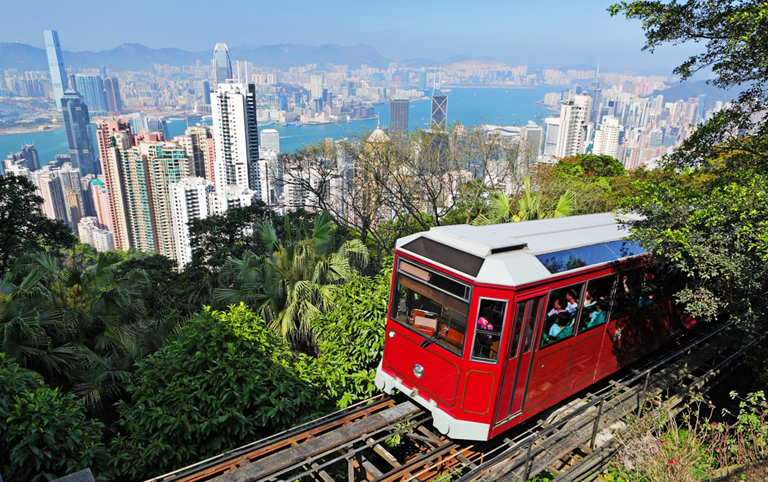 Peak Tram to Victoria offers a spectacular visual illusion
Peak Tram to Victoria offers a spectacular visual illusion
-
 Appreciate the vista of Hong Kong from Victoria Peak
Appreciate the vista of Hong Kong from Victoria Peak
-
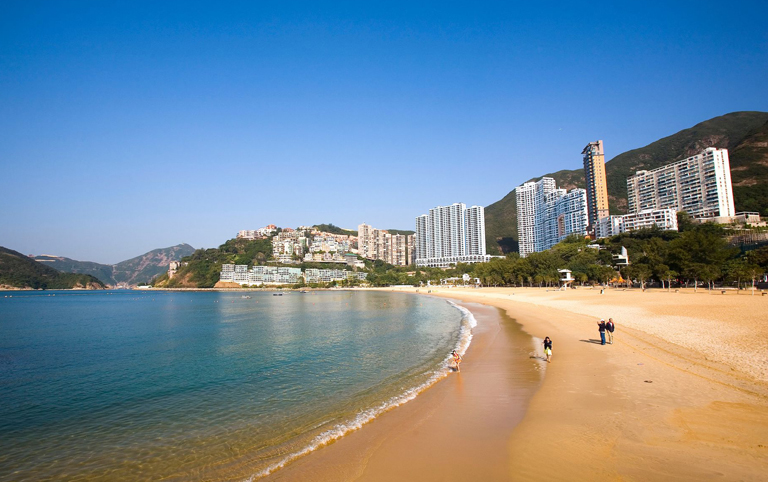 Enjoy the long-stretching crescent-shaped white sand beach in Repulse Bay
Enjoy the long-stretching crescent-shaped white sand beach in Repulse Bay
Day 3 Flight to Guilin from Hong Kong
Today, you are going to leave Hong Kong for Guilin. Guilin is a world famous scenic city as well as a historic and cultural city featuring karst landforms. You will be picked up at the airport by your private guide, then transferred to check in your hotel in downtown.
Optional Train Transfer: It is also available to take a train from Hong Kong to Guangzhou (about 3 hours) or Shenzhen (about 0.5 hours), and then take a high speed train to Guilin (about 2.5 hours).
Day 4 Guilin ( B, L )
Today’s Guilin vacation will be started with a leisure cruise on the poetic Li River. You will board the cruise ship at Mopanshan Pier on the upper stream of Li River, then cruise about 4 hours to the Yangshuo Town on the downstream. While enjoying the relaxing cruise, you will also be presented by an amazing visual feast of the most beautiful Karst landscape in China just like a painting - the lively Li River wriggling among lovely limestone hills with green trees and leading you to the romantic scenery of Yangshuo.
Disembark at Yangshuo Town. After getting some rest, go outside to explore the idyllic Yangshuo countryside by taking a sightseeing minibus or riding a bicycle. March along Shilihualang (means 10 miles gallery in Chinese), be enthralled by the patches of paddy fields nestling under green hills and near the mirror-like river, with farmers cultivating the soil with their water buffalos. While in the evening, you can stroll along the West Old Street, witnessing how the western culture and Chinese culture perfectly and peacefully coexisting here.
-
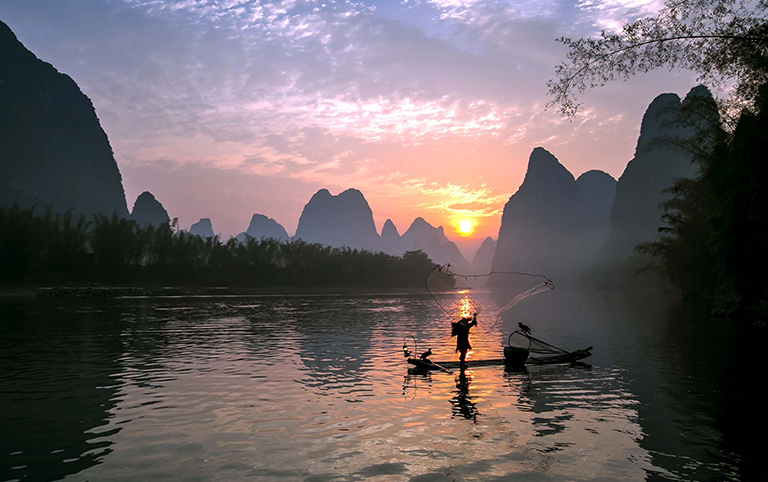 Picturesque Li River
Picturesque Li River
-
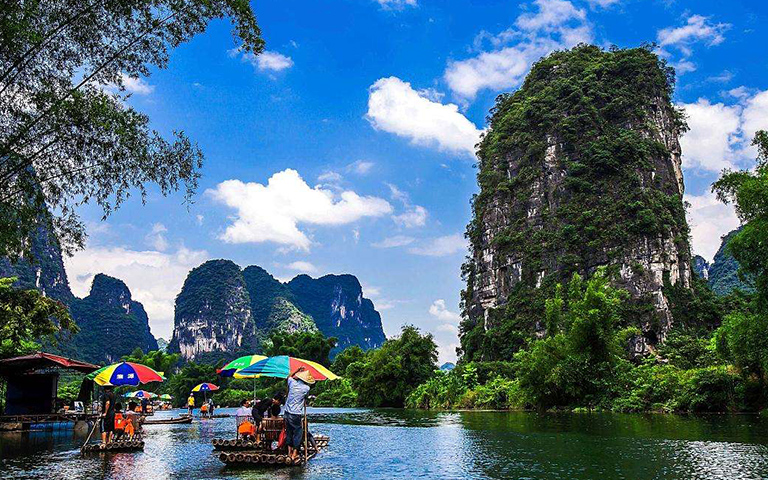 View the Scenery of Yangshuo by Riding
View the Scenery of Yangshuo by Riding
-
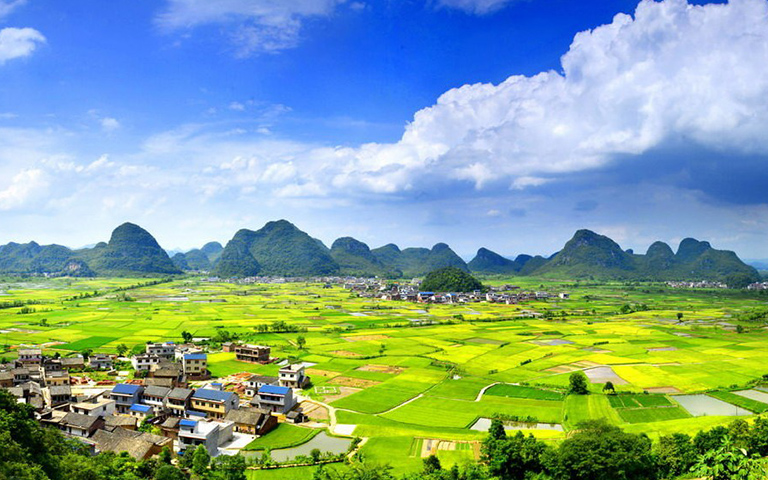 Incredible Landscape of Yangshuo
Incredible Landscape of Yangshuo
Day 5 Flight from Guilin to Beijing ( B, L)
Today you will drive back to Guilin City to visit the landmarks and catch your departing flight. First attraction is the Elephant Trunk Hill, the symbol of the city, a rock mountain shaping like an elephant drinking on the Li River. Next attraction is the magical Reed Flute Cave, a majestic underground palace, where condenses millions of years’ natural efforts to form the incredible stalactite, stalagmite, stone shield and stone waterfall of different sizes and shapes.
After the tour, be escorted to the airport to catch your flight to Beijing, the capital of China. Upon arrival, you will be met by local tour guide at the airport and be transferred to your hotel in a private vehicle. The rest of today is free for you to take a walk in Beijing.
Day 6 Beijing ( B, L )
China has more than 4000 years’ history of Imperial Social System, while Beijing is the best place in China to experience the magnificent history and culture of ancient China. Today your guide will pick you up in the hotel after your breakfast, then start the wonderful ancient China culture and history tour!
You will firstly get to the world's largest plaza – Tian’anmen Square. The grandiose Tian’anmen Gate was the place where the chairman Mao announced the establishment of the People’s Republic of China to the world. Passing through Tiananmen Gate, you will enter the splendid Forbidden City, the previous home to 24 emperors of Ming and Qing Dynasties for 600 years. Magnificent architectures, intricate ornaments and touching legends make it a must-see of China. In the afternoon, head to visit the stunning and exquisite Summer Palace, and be amazed at the vast ensemble of lakes, gardens, temples, and palaces, together as a masterpiece of Chinese landscape garden design. While in Qing Dynasty, it was the personal summer retreat for the royal families. It is made up of front hill, back hill and Kunming Lake. You will see splendid halls and pavilions in the front hill, while in the back hill, you will enjoy quiet and natural beauty.
After the sightseeing, you will be taken back to your hotel for rest.
Optional Recommended Night Activity: 1) watch an exciting Chinese Kungfu Show at Red Theatre which usually starts at 7:30 pm; 2) enjoy a famous Beijing Opera Show at Liyuan Theater between 19:30-21:00.
-
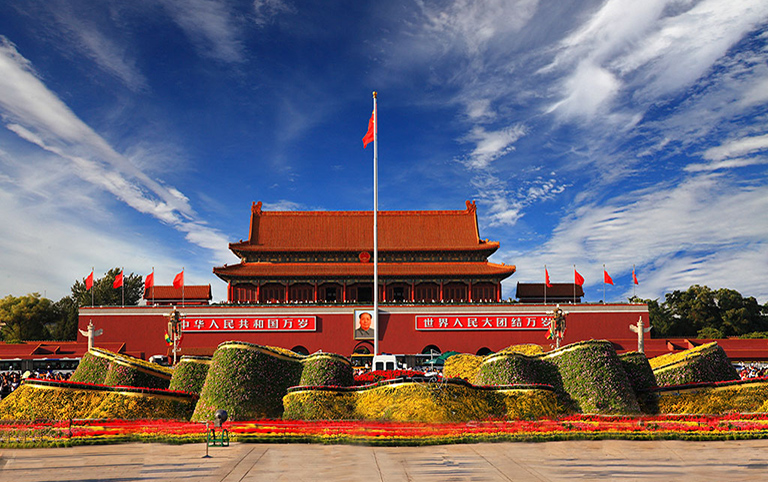 Tiananmen Square is a symbol of national cohesion
Tiananmen Square is a symbol of national cohesion
-
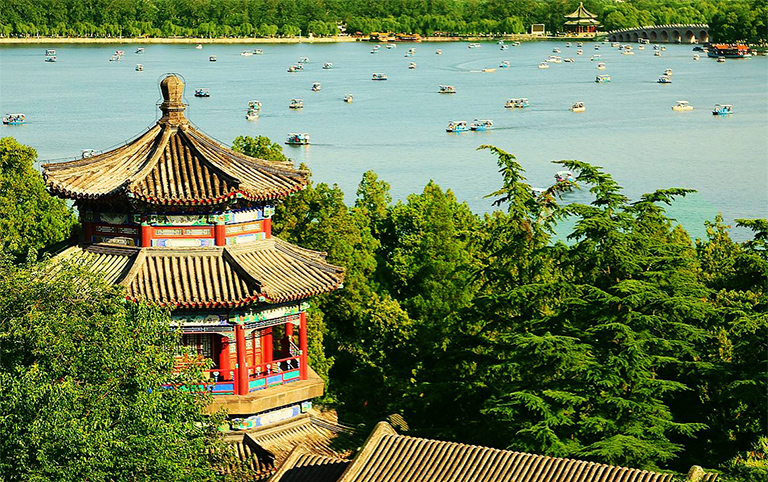 Wonderful Summer Palace for Summer Retreat
Wonderful Summer Palace for Summer Retreat
-
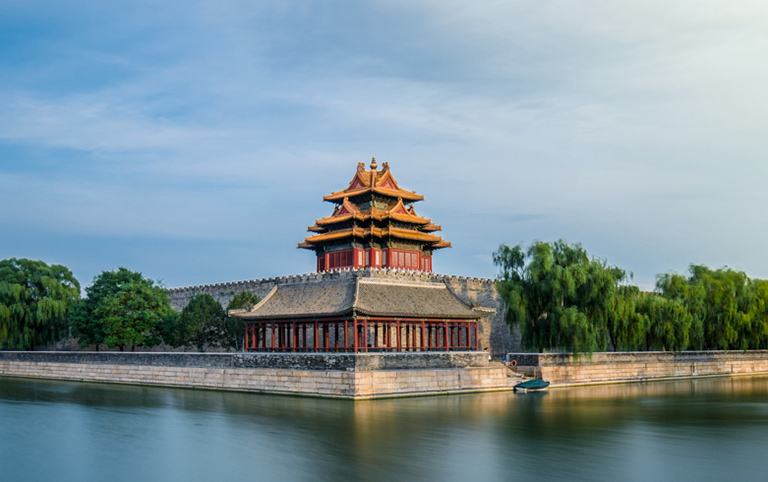
Day 7 Beijing ( B, L )
Hiking the Great Wall is one-in-a-lifetime thing to do for most travelers. Today, you are going to accomplish the Great Wall dream. You will be escorted about 70km from the downtown Beijing to the world-famous Mutianyu Great Wall which has fewer tourists compared with Badaling Great Wall. At the same time, it is the best Great Wall section to view the delicately beautiful scenery while appreciating the grandness of the Walls. After arriving at the ticket office, you will take a cable car to the walls of Mutianyu, and then hike about 2 hours on the Great Wall.
After the Mutianyu Great Wall hiking, you will drive back to the city. On route, take a sidetrip to the solemn Ming Tombs of ancient emperors in Ming Dynasty. Wander along the Sacred Road, a tranquil royal path featured with statues of divine animals and officials; also take an adventure to the mysterious Underground Palace. Before getting to your hotel, you will also make a stop at the Beijing Olympic Village to take some pictures of the world-famed "Bird’s Nest" and the "Water Cube" from the outside.
-
 Kids have a good time while hiking the Great Wall
Kids have a good time while hiking the Great Wall
-
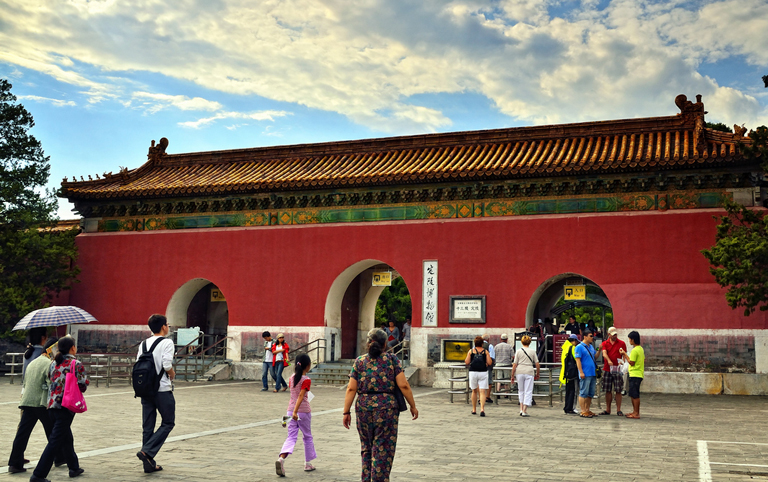 Learn about history by visiting Ming Dingling Tomb
Learn about history by visiting Ming Dingling Tomb
-
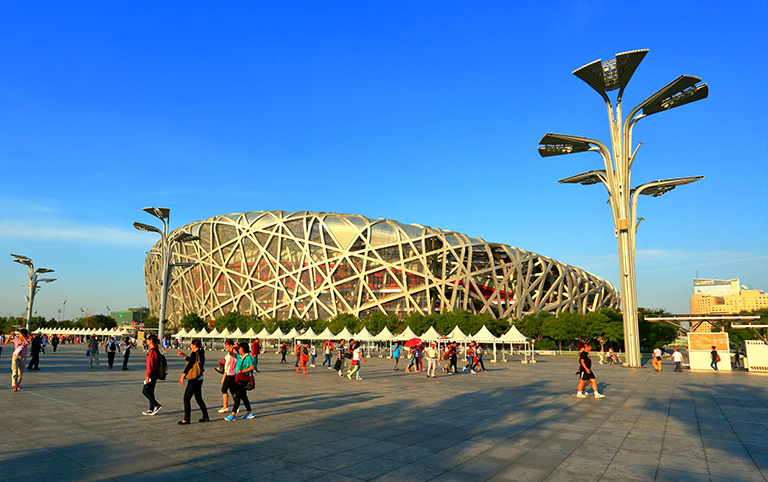 Bird's Nest
Bird's Nest
Day 8 High Speed Train to Xian from Beijing( B, L )
After breakfast, you'll go to marvel at one of the greatest masterpiece in Chiense architecture history - the Temple of Heaven, where the ancient emperors used to preside at various rituals for a national good harvest in ancient times. Today, the outer area of the Temple of Heaven is a public park for locals to gather to play Taichi, fly kites, chatting… while the inner area is the historical site for tourists to learn about the ancient Chinese history and culture. Later move on to visit the most famous Hutongs which are some old alleys with traditional architecture originated from Yuan Dynasty (CD 1271~1368. Today, there are still many local Beijingers living in these old quarters, while in the Qing Dynasty (CD 1636~1912), there were even some noble royal families resided here. You can wander leisurely around these narrow alleys to experience the original features of people’s living in old time, or take a relaxing rickshaw through. Lunch will be arranged at a local family who lives in Hutong.
After the lunch, you will have some free time until be taken to catch a high speed train to Xian. Our local guide will be waiting for you in train station and escorting you to your hotel in the downtown area. The rest of day is free for you to explore the ancient city on your own..
-
 Temple of Heaven was used to pray for a year of rich harvest
Temple of Heaven was used to pray for a year of rich harvest
-
 Hutong Rickshaw Tour
Hutong Rickshaw Tour
Day 9 Xian ( B, L )
After breakfast, drive about 1.5 hours to witness the magnificent man-mad wonder - the Terracotta Warriors and Horses, which were interred to protect Qin Shi Huang (the first Emperor of China) in his afterlife. Over 8,000 life-sized terracotta warriors and horses with different looks and numerous bronze weapons compose a large-scale army system to reappear the majestic momentum of the Qin Army 2,000 years ago.
In the afternoon, drive back to Xian city to visit the Ancient City Wall, the largest and best-preserved ancient city wall in China. Built in Ming Dynasty as a military defense, the wall’s top is wider than its height to allow the army drill. Stroll on the top of the ancient wall and observe the modern Xian, emerge yourself in the charm of this ancient capital. Your next place is to go is the nearby Muslim Quarter, a place to satisfy your stomach with various delicious local foods and snacks. It is also a wonderful place for a leisure walking around.
Optional Recommended Activity: 1) biking for a while on the Ancient Great Wall; 2) enjoy a wonderful performance of Tang Palace Dancing Show (usually from 8pm to 9pm).
-
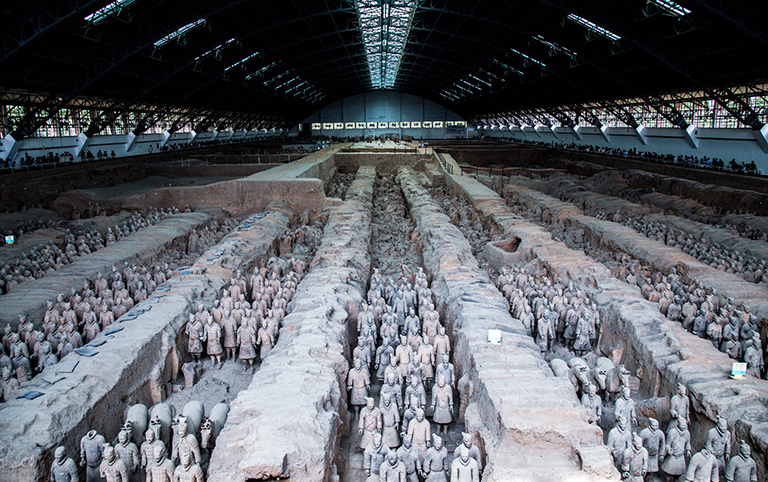 Magnificent Terra-Cotta Warriors
Magnificent Terra-Cotta Warriors
-
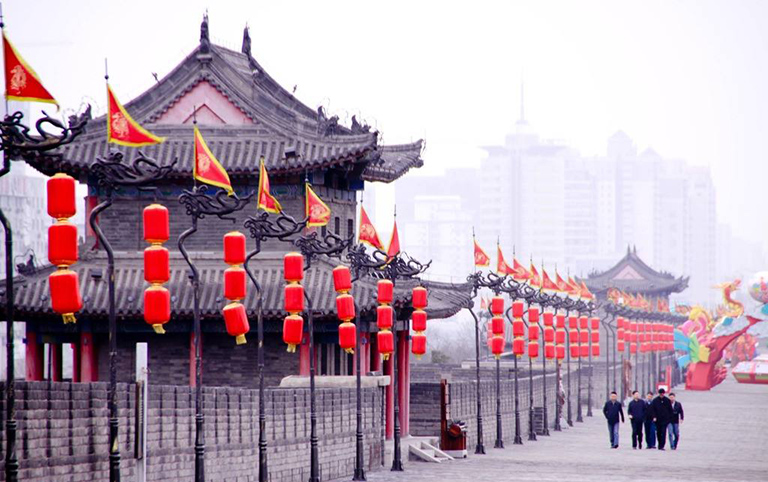 Beautiful Ancient City Wall
Beautiful Ancient City Wall
Day 10 High Speed Train to Chengdu from Xian ( B, L )
In this morning, you will firstly make a visit to the Big Wild Goose Pagoda. This earliest and largest square pavilion style pagoda built in Tang Dynasty is a seven-layered pagoda with a height of 64.5 meters. The pagoda was first built to store the Buddhist sutras brought back from the Ancient India by Xuanzang (the prototype character of Tang Seng in the novel of Journey to the West).
After that, move to Shaanxi History Museum, where collects over 370,000 pieces cultural relics of different dynasties, including bronzes, Chinaware, gold and silver wares, grave frescos, currencies of various dynasties, etc.
After the tour, be escorted to the Xian North Railway Station to catch your High Speed Train to Chengdu, the hometown of the cute Giant Panda. Upon arrival, you will be met by local tour guide at the railway station and be transferred to your hotel in a private vehicle. The rest of today is free for you to relax in this leisure city.
-
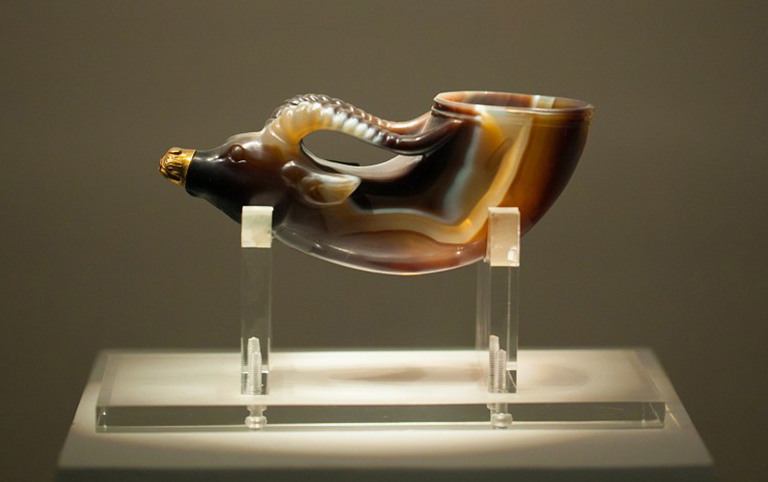 Treasure Collected in Shaanxi History Mueseum
Treasure Collected in Shaanxi History Mueseum
-
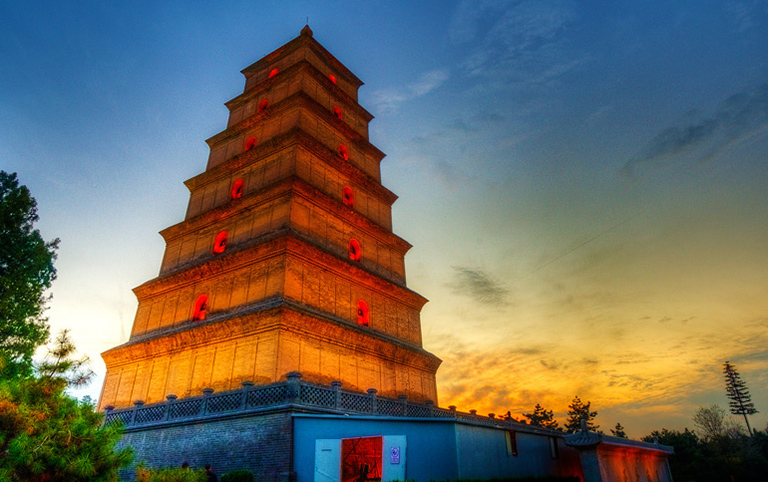 1300-Year-Old Giant Wild Goose Pagoda
1300-Year-Old Giant Wild Goose Pagoda
Day 11 Chengdu ( B, L )
Chengdu has three famous features – Giant Panda, History and Leisure Living Pace. Today, you will go to explore these tree features one by one. First is to visit the lovely Giant Pandas in Chengdu Research Base of Giant Panda Breeding, which is the No. 1 thing to do in Chengdu. You will leave your hotel early and drive about 30 minutes to the panda base so that you can catch up the great moments of pandas, such as feeding, playing, climbing tree, etc. There are different enclosures for pages of different ages, such as all around to see baby pandas, 1 year-old pandas, teenage pandas, and older pandas. Beautiful walking paths will lead you to visit the enclosures from one to next. Enjoy the happy time with pandas.
The second place to visit is the sacred Wenshu Temple which is hidden peacefully among the modern mansions. This temple is the most popular Buddhist temple in Chengdu region. It has beautiful traditional ancient architecture. The atmosphere is calm and quiet, some people are praying. There is a little garden and the monastery is very colorful and decorated.
Lastly, you are going to explore the leisure living peace of locals at Renmin Park and Jinli Street. Renmin Park, or People’s Park is the place for locals to go for a relaxing walk, meet friends, or have a cup of tea. While Jinli is the “street of tourists”. You can wander on the traditional old street to absorb the special atmosphere of Chengdu, taste local snacks, watching a performance, etc.
-
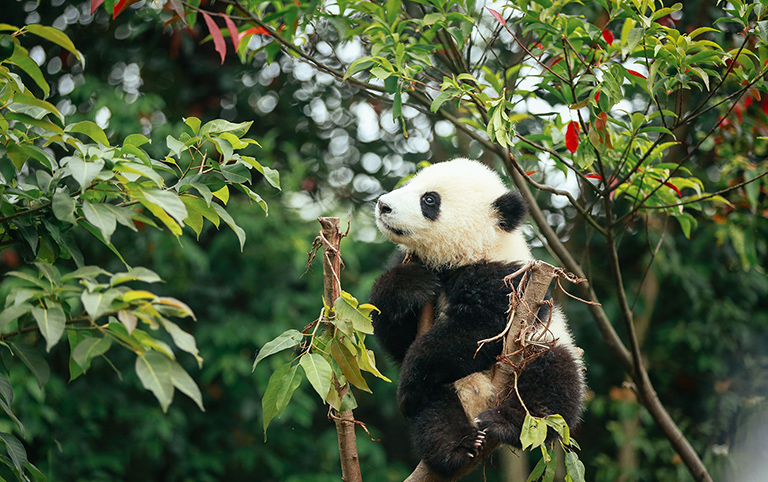 This giant panda seems thinking something deeply
This giant panda seems thinking something deeply
-
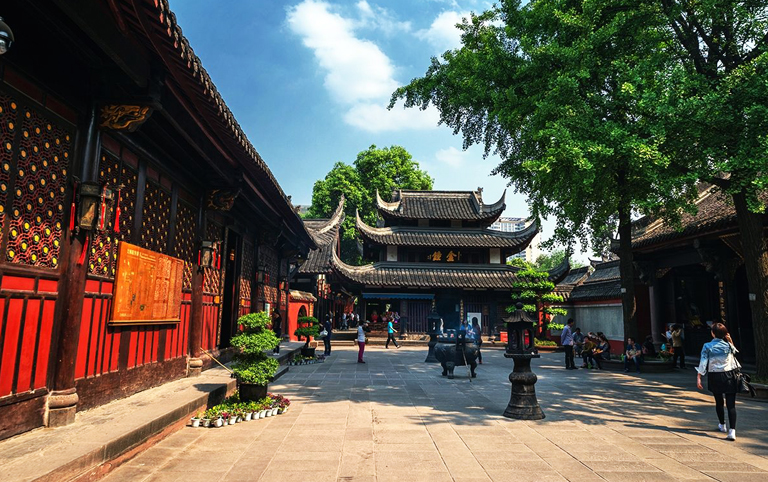 Wenshu Temple - Home to Buddhist Association of Sichuan
Wenshu Temple - Home to Buddhist Association of Sichuan
-
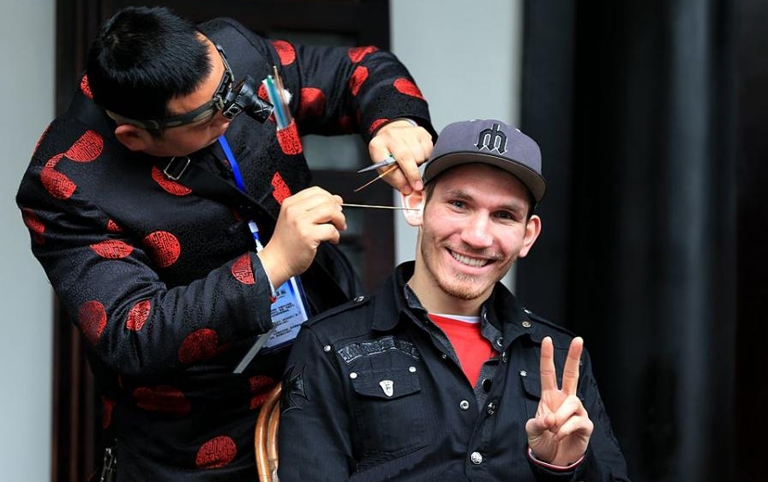 Enjoy traditional Ear Treatment
Enjoy traditional Ear Treatment
Day 12 Flight to Lhasa from Chengdu ( B )
Today, you will be free until your local guide escorts you to the airport for your flight to Lhasa (about 2.5 hours’ flight). Upon arriving at Lhasa Gongga Airport, you will be picked up by local tour guide at the airport hall, then be escorted to your hotel in Lhasa city in a private vehicle. The rest of the day is free for you to explore the local areas and acclimatize yourself to the air, temperature and high altitude of Lhasa.
High Altitude Acclimation Tips:1) go for some leisure walking to acclimate the high altitude but avoid strenuous activity after arrival; 2) you'd better not have bath, in case of catching a cold; 3) drink more water, and have some fruit; 4) have a good rest.
-
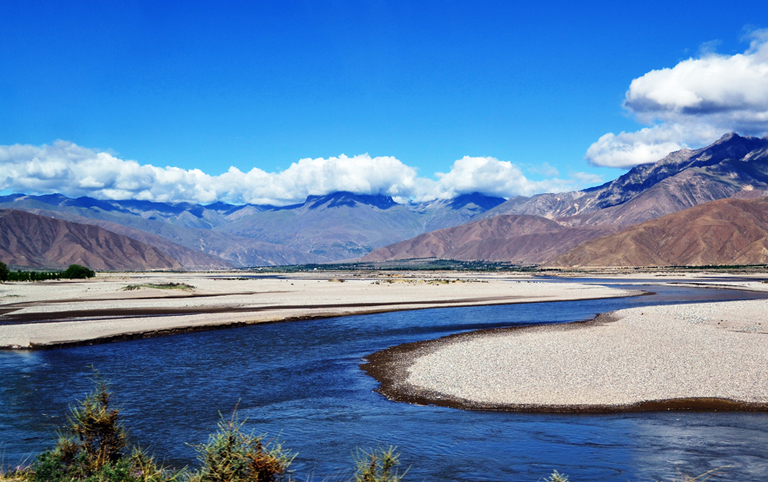 Yarlung Zangbo River - the Mother River of Tibet
Yarlung Zangbo River - the Mother River of Tibet
Day 13 Lhasa ( B )
Start today’s Lhasa exploration with an exciting visit to the landmark - Potala Palace which is regarded as one of the most beautiful architectural building in the world. You will climb up the palace along the zigzag stone paths with white-and-red walls to the top of the palace where you can not only appreciate the exotic Tibetan-style architecture, but also get a great view of Lhasa’s urban areas, then walk into the inner space of Potala Palace to explore the stately chapels and learn about the history of the palace.
Continuing your exploration, you will then get to Jokhang Temple which is considered as the spiritual heart of Tibetan Buddhism. Each day, there are thousands of pilgrims coming from different places in Tibet to the temple to worship to the Buddha. This temple is also known as the “house of Buddha” because it keeps the precious Jowo Rinpoche, the life-sized (5 foot/1.5m) image of the Shakyamuni at the age of 12. The last site for today’s exploration is the famous Barkor Street. It is a circular and wide street encircling the Jokhang Temple. The local people like to walk on the street for several circles usually in the late afternoon as a daily tradition of pilgrimage. The street also has many shops selling a wide variety of traditional Tibetan goods, religious items and handcrafts.
Tips of today: 1) there are 1,080 steps up to climb to the top of Potala Palace, so don’t walk in a rush, which may cause high altitude sickness; 2) taking photos is not allowed inside the palace; 3) today you will be mainly outside, please bring some water, a hat, sun cream, and sun glasses with you.
-
 Potala Palace - Masterpiece of Tibetan Architecture
Potala Palace - Masterpiece of Tibetan Architecture
-
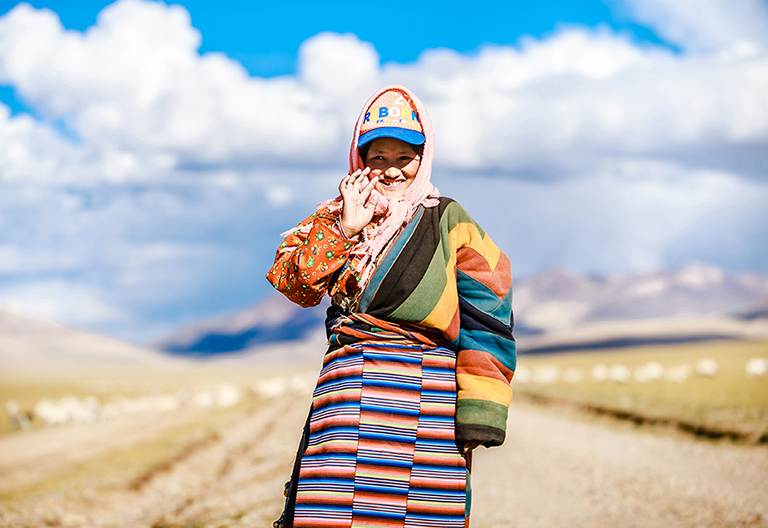 Smiling Tibetan Lady
Smiling Tibetan Lady
-
 Prayers at Jokhang Temple
Prayers at Jokhang Temple
Day 14 Lhasa ( B )
After breakfast, you will firstly go to visit the beautiful Norbulingka which used to be the former summer palace of Dalai Lamas in the ancient time, and now is a public park. It is famous for its Potrang, the private palaces of former Dalai lamas with grandiose Tibetan architecture style. Next, drive several kilometers to the western outskirts of Lhasa to visit Drepung Monastery. Drepung, in Tibetan, means “prosperity”. Since its establishment, Drepung Monastery has always been one of the most important Buddhist monasteries in Tibet. In its heyday, there were more than 10,000 monks lived and studied in the monastery. Throughout its history, many important and famous Tibetan leaders used to study here, especially the Dalai Lamas. So Drepung Monastery is also respectfully known as the “Mother School of Dalai Lamas”.
In the afternoon, you will be taken to another famous monastery in Lhasa - Sera Monastery. It is famous for the spectacular “Buddhism Debating”. As a daily routine, the monks gather in a courtyard, and debate on the Buddhist doctrines with supplemented gestures, which is thought to be helpful to facilitates better comprehension of the Buddhist philosophy to attain higher levels of study. After enjoying the "Buddhism Debating", you will be transferred back to the city. The rest time is your own free time to rest.
The Etiquette of Visiting Monastery: 1) you shouldn’t wear short and uncover shoulders; 2) taking off your sunglasses and hat before entering the chapels; 3) taking photos is usually not allowed inside the chapels.
-
 Courtyard for Buddhism Debating in Sera Monastery
Courtyard for Buddhism Debating in Sera Monastery
-
 Norbulingka Park is a good summer resort in Lhasa
Norbulingka Park is a good summer resort in Lhasa
-
 Drepung Monastery Roof
Drepung Monastery Roof
Day 15 Lhasa - Gyantse - Shigatse / 360km, About 8hrs' Driving ( B )
Today, you will leave Lhasa and drive about 8 hours to Shigatse, the second largest city in Tibet. It may be a long journey, but there are many things to do along the road. The first site you will reach is the holy Yamdrok Lake (altitude: 4,400m). As the largest fresh lake in the northern of the Himalaya Mountains, it spreads about 675 square meters from south to north, like an eardrop lying in the arms of snow-capped giant mountains. Viewing from a distance, you can see fertile pastures full of yaks and sheep, and some small Tibetan villages along the lakeshore. Keeping driving not so far from Yamdrok Lake, you will see the imposing Karola Glacier (altitude: 5,045m) towering aloft on the right side of the road.
Continuing your trip, you will get to the historical city of Gyantse. Feel hungry? Have a good lunch in the town, then go to visit the mysterious Palcho Monastery (altitude: 4,040m). The monks and tradition of three important sects of Tibetan Buddhism - Sakyapa, Zhalupa and Gelukpa, peacefully coexist in this monastery. Its Kumbum, which is 35 meters high and has 76 small chapels with hundreds images of Kriyatantras , is believed to be the largest such structure in Tibet.
After the Gyantse sightseeing, keep drive about 3 hours, you will arrive at your hotel in Shigatse (altitude: 3,800m). Have a good rest!
Tips of today: 1) wear warm clothes to prevent from cold and wild; 2) pack some food and drinks with you because you will spend much time on the road.
-
 Palcho Monastery is famous for its Kumba
Palcho Monastery is famous for its Kumba
-
 Yamdrok Tibetan Stone Marks
Yamdrok Tibetan Stone Marks
-
 Overview of Palcho Monastery from Dzong
Overview of Palcho Monastery from Dzong
Day 16 Shigatse - Mount Everest / 350km, About 7hrs's Driving ( B )
Today, before you driving Mount Everest, you will firstly take a visit to the official seat of Panchen Lama - Tashilhunpo Monastery which is also the largest and most influential Gelug Monastery in Shigatse prefecture. Here you will see a giant statue of Future Buddha, the largest one of its kind on earth ( 26.2 meters high and 11.5 meters wide ), decorated with precious pearls, turquoises, corals and ambers.
Then, you will leave Shigatse for the final destination of your Tibet trip - Mount Everest. Though being a long driving of about 7 hours, but the views along the road are stupendous. In clear days, you can see the clear face the Himalaya range including several famous peaks over 8,000 meters, such as Makalu, Lhotse, Gyachung and Cho Oyu. When you finally get to the Rongbuk Monastery, and get the first sight of the mighty Everest, you will immerse in a solemn ethereal mood and find all the efforts you have made along the long way are not in vain. Located about 5100 meters above the sea level, Rongbuk Monastery is the highest monastery in the world. It is the best location to take some great photos of the front face of Mount Everest. The rest of today is free for you to visit the Rongbuk Monastery and explore surrounding landscape.
Accommodation: if you visit Mount Everest during off season (November to April), you will accommodate at Rongbuk Guest House near the Rongbuk Monastery; if you visit Mount Everest during the peak season (May to October), you will accommodate at the Tibetan Tents Camp which is only run between May and October by local Tibetans. It is near Rongbuk Monastery as well. Please note that the accommodation at both places is very simple and basic, only dorm beds with communal squat toilets are available. Duvets, heated blankets and hot water will be provided, and you are suggested to bring your own sleeping bag and toilet paper. There is no running water, sinks or showers. The dining room just offer basic breakfast and dinner without menu. Remember to dress warmly all the time.
Tips of today: 1) currently Everest Base Camp is not open for tourists for environmental protection and the Everest landscape can be also enjoyed at Rongbuk Monastery - closest place to Mount Everest tourists can reach; 2) the vehicles and buses can only escort travelers to the Parking Lot which is about 20km away from Rongbuk Monastery, and then you need to take a 30 minutes' scenic park bus there; 3) the Everest altitude marker, a tablet reading "Mt. Qomolangma Elevation Measurement" has been transferred near Rongbuk Monastery and you can take a photo to commemorate your wonderful adventure tour; 4) bring a warm coat for low temperature in Everest and avoid strenuous activity to prevent from high altitude sickness.
-
 Rongbuk Monastery on the Mount Everest
Rongbuk Monastery on the Mount Everest
-
 Glorious architecture of Tashilhunpo Monastery
Glorious architecture of Tashilhunpo Monastery
-
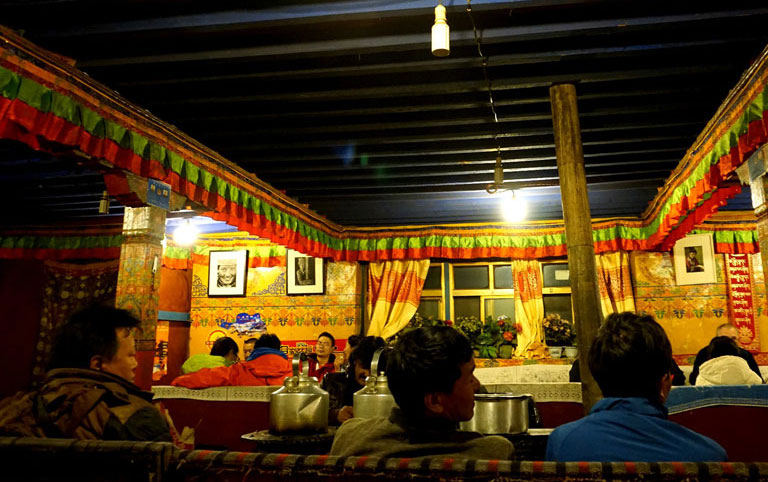 Dining Room in Rongbuk Monastery Guesthouse
Dining Room in Rongbuk Monastery Guesthouse
Day 17 Everest - Gyirong Town / 370km, About 8hrs' Driving
Wake up early to enjoy the marvelous sunrise on the peak of the world from Rongbuk Monastery. The top part of the Mount Everest is always covered by snow all the year round, and when the sun shines on the mountain, the peak is like a giant white pyramid, which is one of the most famous sceneries of Mount Everest. In bright days, you can also see a wisp of cloud hanging above the top of Mount Everest. It flies eastward in the fast western wind just like a flapping flag. This unique phenomenon is the spectacular “Cloud Flag”. The cloud will change from surging waves into a thin cooking smoke or from galloping steeds into the mysterious veil of a goddess.
Till now your Mount Everest adventure is about to end. The rest of today is to drive to Gyirong Town. The views along the road are stupendous. In clear days, you can see the clear face of Shishapangma Peak and enjoy the beautiful view of Pekutso Lake.
Accommodate at Gyirong Town.
Tips of today: 1) the sunrise usually starts around 6:30 am to 7am on Mount Everest; 2) keep warm all the time.
-
 Wonderful View of Mount Everest
Wonderful View of Mount Everest
Day 18 Gyirong - Border
Today, drive about 25 km to Gyirong Port at China-Nepal border. Tour ends! The rest of today is free on your own to transfer to Kathmandu or other destinations in Nepal. Kathmandu is only about 160 km from Gyirong Port, but remind the road condition is not as good as Tibet roads. It usually takes more than 6 hours to drive to Kathmandu from Gyirong Port because the road is narrow and bumpy, and buddy in rainy season.
Useful Trip Notes
-
- 1. Tibet Permits Guaranteed
To travel in Tibet, all Non-Chinese passport holders need to have a Tibet Travel Permit which is issued by Tibet Tourism Bureau in Lhasa. And only Chinese travel agencies like Tibet Discovery can apply for the permit on behalf of tourists. You must obtain it before your tour starting because the permit will be checked when you board your flight/train to Tibet. Traveling with Tibet Discovery, you don't have to worry about the complicated procedures of Tibet Travel Permit application. All you have to do is to confirm a tour package with us and send us your passport and Chinese visa copies at least 15~20 days in advance before your tour, then we will take care of all the rest things. Once the permit is issued, we will deliver to your address in China, such as your hotel, local travel agency, etc.
-
- 2. Available Months to Visit Tibet
Generally speaking, April to October is the best time. July and August are the peak season and rainy season. It is usually snowy and cold in winter, which is not suitable for visit Mount Everest, Namtso and Mount Kailash regions. While other places such as Lhasa, Gyantse and Shigatse are suitable for travel all year around. The temperatures in daytime and night differs a lot, usually 5~15℃ in the daytime and -5~0℃ in the night, so please wear accordingly.
-
- 3. High Altitude Sickness
The average altitude of Tibet is about 4000 meters above the sea level (Lhasa: 3700m; EBC: 5200m; Namtso: 4718m). You may suffer a bit from High Altitude Sickness in the beginning days of your Tibet trip if you haven’t had rich high plateau travel experience. But don’t worry too much, the high altitude can be acclimatized usually in 2~3 days. Our suggestion is to take a physical examination and get suggestions from your doctor, and also bring some medicines to prevent from High Altitude Sickness before your trip. While in Tibet, you should keep warm all the time, avoid strenuous activities, drink more water and eat more vegetables and carbohydrates. You’d better not take showers during the first two days after your arrival in Tibet. If you don’t feel well, get help from your tour guide or go to the hospital without any delay.
-
- 4. How to Go to Tibet
Basically you have two options – flight and train. Currently, you can take a flight to Lhasa from Beijing(4.5hrs), Xian(3.7hrs), Chengdu(2.5hrs), Chongqing(3hrs), Kunming(3hrs), Kathmandu (1.5hrs), etc. Among all these cities, Chengdu and Xian have more frequent flights to Lhasa.
If you prefer a train travel, you can take a train to Tibet from Beijing(40.5hrs), Xian(32hrs), Chengdu(43hrs), Shanghai(47hrs), Chongqing(42hrs), Lanzhou(25hrs), Xining(22hrs), Guangzhou(54hrs). -
- 5. Packing and Wearing Ideas
Firstly you can’t forget your passport and Chinese Visa. A large backpack and a smaller one are recommended (the smaller one can be used for daily activities). Also bring necessary medicine you need. Other stuffs like sunglasses, snow glasses, hats, lip balm, sun block are recommended.
As for wearing, you are suggested to dress in layers (both thin and thick jackets). Down jacket is necessary in Spring and Autumn. A pair of durable and comfortable shoes is necessary.
Recommended Tibet Group Tour Packages
Escorted by a skilled driver and companied by a professional local tour guide to organize all the activities, all you have to do is to enjoy your fantastic Tibet journey.Following are some other recommended Tibet group tour packages that you may be interested in. You can also contact us to customize a trip if you want..
-
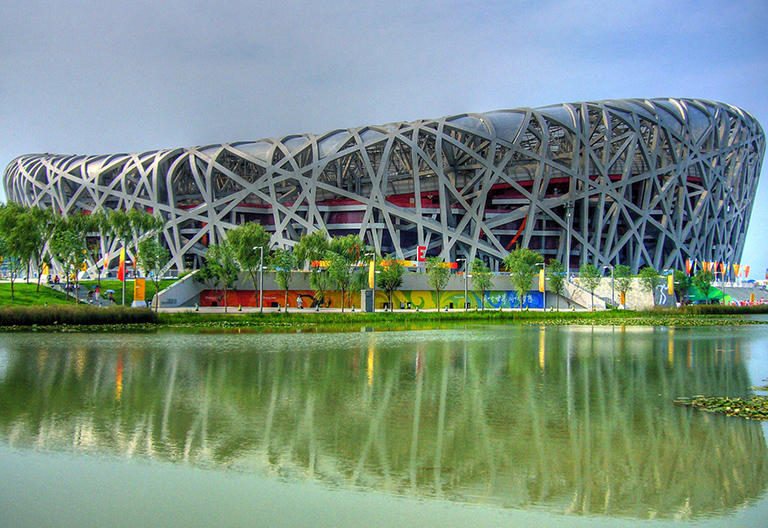
Beijing / Xian / Lhasa
10 Days Brief China History Tour Plus Memorable Trip to Holy Land
Highlights: Forbidden City, Great Wall, Terracotta Warriors, Potala Palace
-
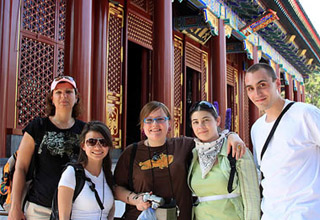
Beijing / Lhasa / Shanghai
10 Days Beijing Lhasa Shanghai Contrast Tour
Highlights: Highlights: Forbidden City, Great Wall, The Bund, Potala Palace,
-

Shanghai / Chengdu / Lhasa / Xian / Beijing
13 Days China Highlights Tour with Panda Visit and Tibet Discovery
Highlights: The Bund, Chengdu Panda Base, Terra-cotta Warriors, Potala Palace, Great Wall




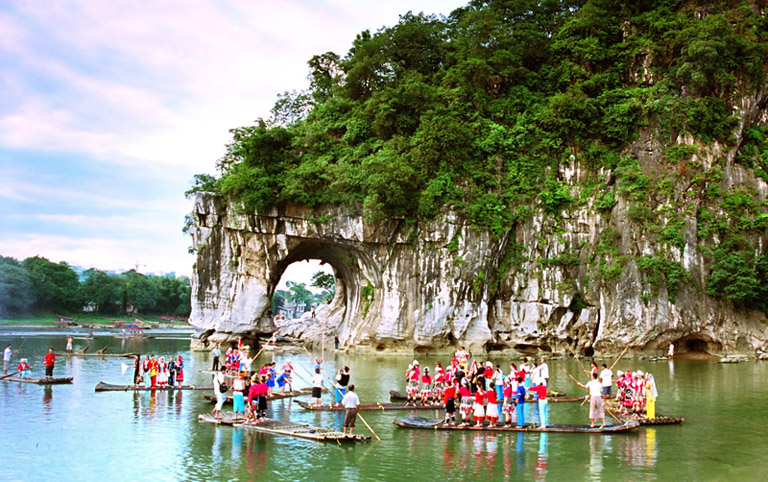

 Karen
Karen Wonder
Wonder Jack
Jack Rita
Rita Johnson
Johnson Vivien
Vivien Wing
Wing Ariel
Ariel Leo
Leo Tracy
Tracy Evelyn
Evelyn April
April Phoebe
Phoebe Kelly
Kelly Shirley
Shirley Reya
Reya Juliet
Juliet Elk
Elk Karina
Karina Tammy
Tammy Felix
Felix Sean
Sean